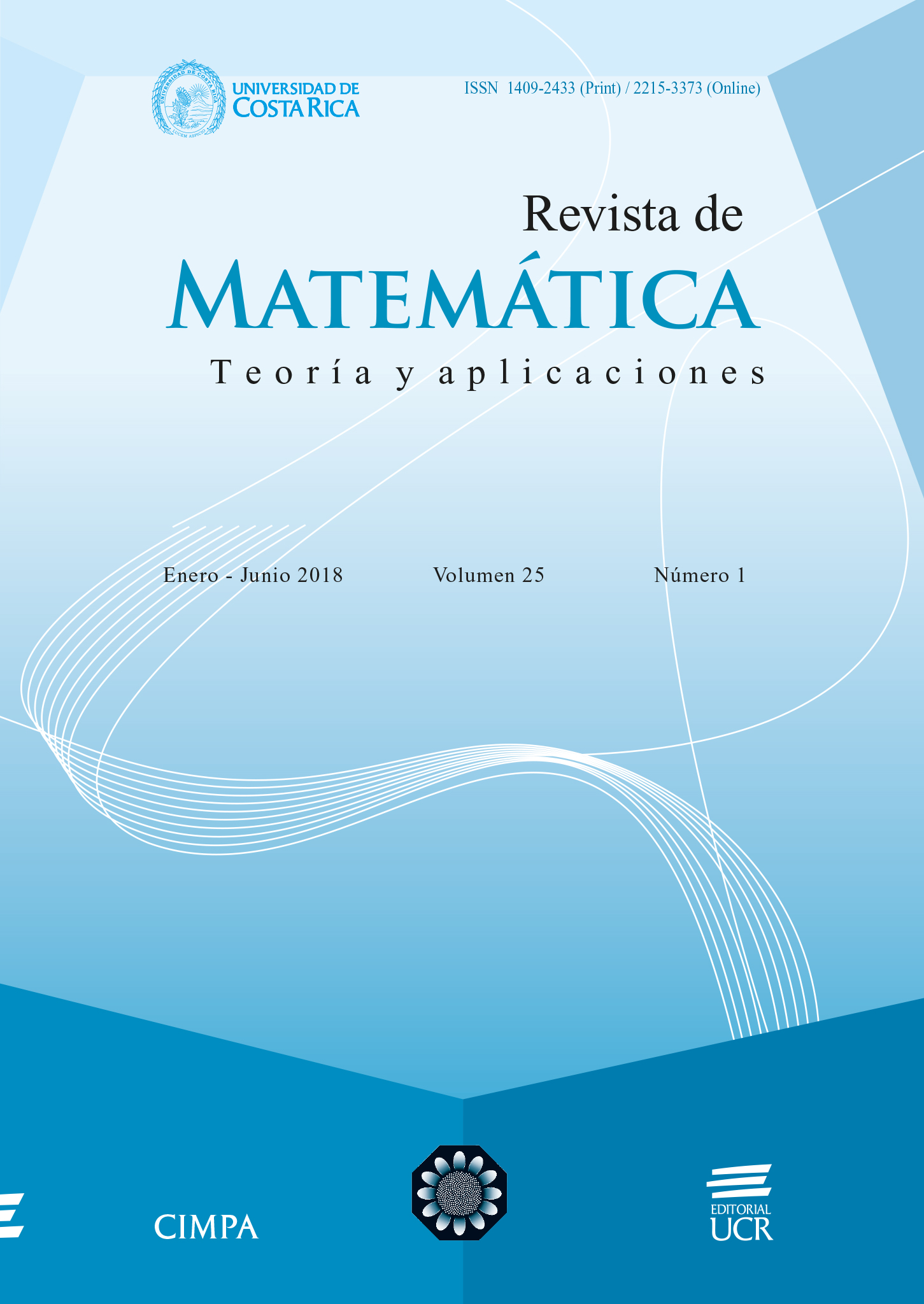Abstract
Modeling wave reflection and transmission is important for a diversity of applications in physics and engineering. Examples can be found in acoustics and electromagnetism. Computational wave propagation requires high order accuracy both in space and time to get accurate phase and dissipation properties. In this paper we derive and evaluate a high order accurate method based on Discontinuous Galerkin Spectral Element Method (DGSEM) to compute reflection and transmission of electromagnetic waves traveling in two homogeneous and isotropic media, separated by a thin plane interfaz, with different physical properties of permittivity " and permeability . To discretize in Space we used DGSEM over a two dimensional Transverse Electric Maxwell Equations. We derived a Riemann solver to compute the numerical flux between the interfaces of two elements of the computational mesh and to add boundary conditions. To discretize in time we use a third order low storage Runge-Kutta of Williamson. Results when compared with the analytical solution, showed spectral convergence in space and third order convergence in time.
References
Acosta-Minoli, C.A.; Kopriva, D.A. (2012) “Boundary states at reflective moving boundaries", Journal of Computational Physics 231(11): 4160–4184.
Acosta-Minoli, C.A.; Kopriva, D.A. (2010) “Discontinuous Galerkin spectral element approximations on moving meshes", Journal of Computational Physics 230(15): 1876–1902.
Black, K. (1999) “A conservative spectral element method for the approximation of compressible fluid flow", Kybernetica vol(35): 133–146.
Canuto, C.; Hussaini M.Y.; Quarteroni A. (2006) Spectral Methods: Fundamentals in Single Domains. Springer, Netherlands.
Censor, D. (2004) “Non-relativistic scattering by time-varying bodies and media", Progress in Electromagnetics Research 48(1): 249–278.
Etienne S.; Garon, A.; Pelletier, D. (2009) “Perspective on the geometric conservation law and finite element methods for ale simulations of incompressible flow", Journal of Computational Physics vol(228): 2313–2333.
Kopriva, D.A. (1986) “A spectral multidomain method for the solution of hyperbolic systems", Applied Numerical Mathematics 2(3): 221–241.
Kopriva, D.A.; Woodruff, S.; Hussaini, M.Y. (2002) “Computation of electromagnetic scattering with a non-conforming discontinuous spectral element method", International Journal for Numerical Methods in Engineering 53(1): 105–122.
Kopriva, D.A. (2006) “Metric identities and the discontinuous spectral element method on curvilinear meshes", Journal of Scientific Computing 26(3): 301–327.
Kopriva, D.A. (2009) Implementing Spectral Methods for Partial Differential Equations. Springer, Netherlands.
Lee, S.W.; Mittra, R. (1967) “Scattering of electromagnetic waves by a moving cylinder in free space", Canadian Journal of Physics 45(9): 2999–3007.
Mohammadian, A.H.; Shankar, V.; Hall, W.F. (1991) “Computation of electromagnetic scattering and radiation using a time-domain finite-volume discretization procedure", Computer Physics Communications 68(1-3): 175–196.
Orfinadis, S. (2008) “Electromagnetic waves and antennas", en: http://www.ece.rutgers.edu/~orfanidi/ewa, consultado el 11/03/2017.
Patera, A.T. (1984) “A spectral element method for fluid dynamics laminar flow in a channel expansion", Journal of Computational Physics 54(3): 468–488.
Shang, J.S. (1997) “Characteristic-based methods in computational electromagnetics", Computational Electromagnetics and its Applications. Kluwer Academic Publishers.
Toro, E.F. (2006) Riemann Solvers and Numerical Methods for Fluid Dynamics. A Practical Introduction, 2 ed. Springer-Verlag, Berlin, Heidelberg.
Williamson, J.H. (1980) “Low storage Runge Kutta schemes", Journal of Computational Physics 35(1): 48–56.





